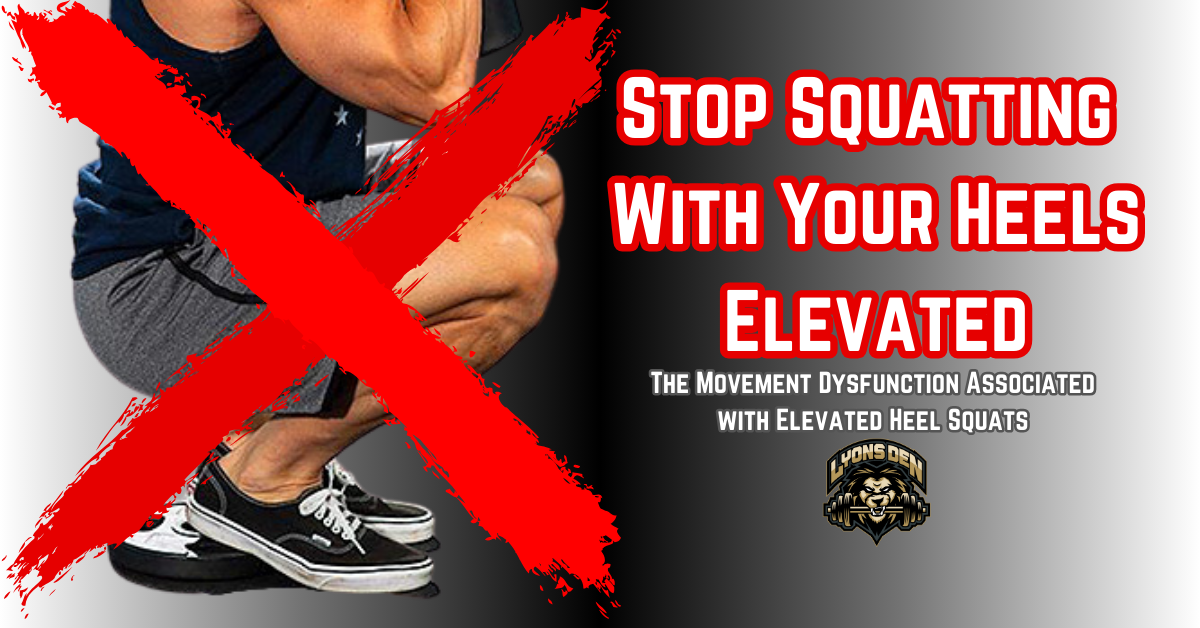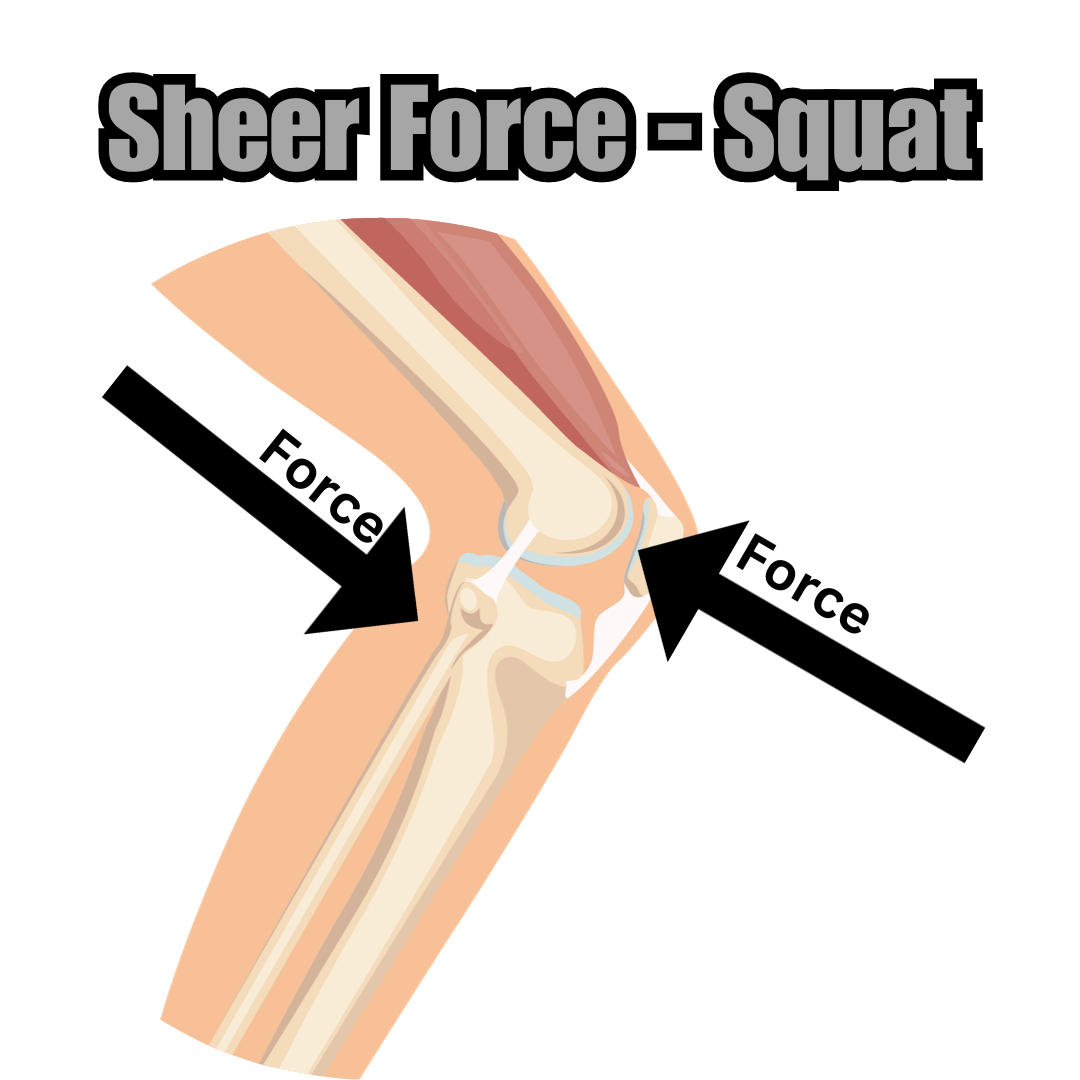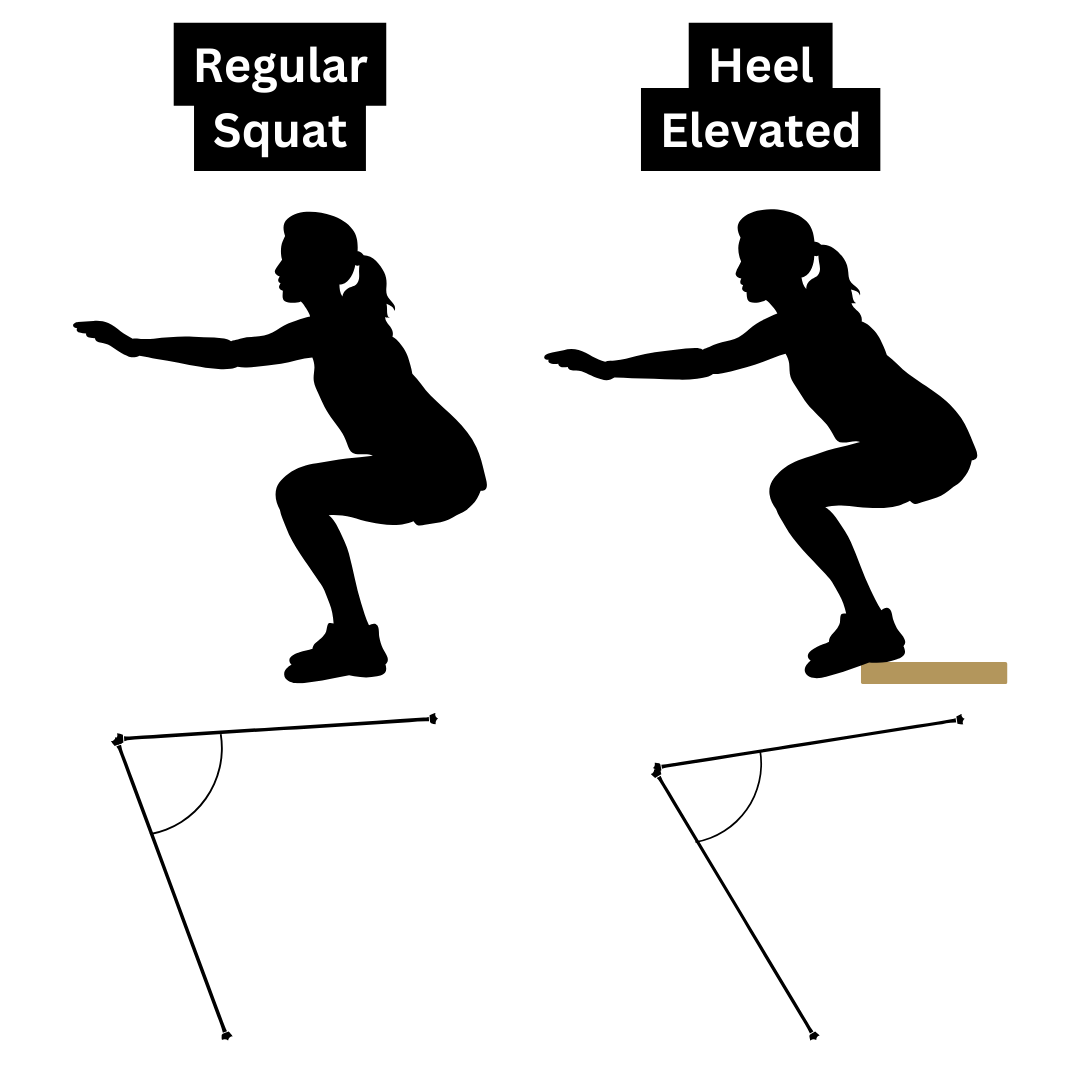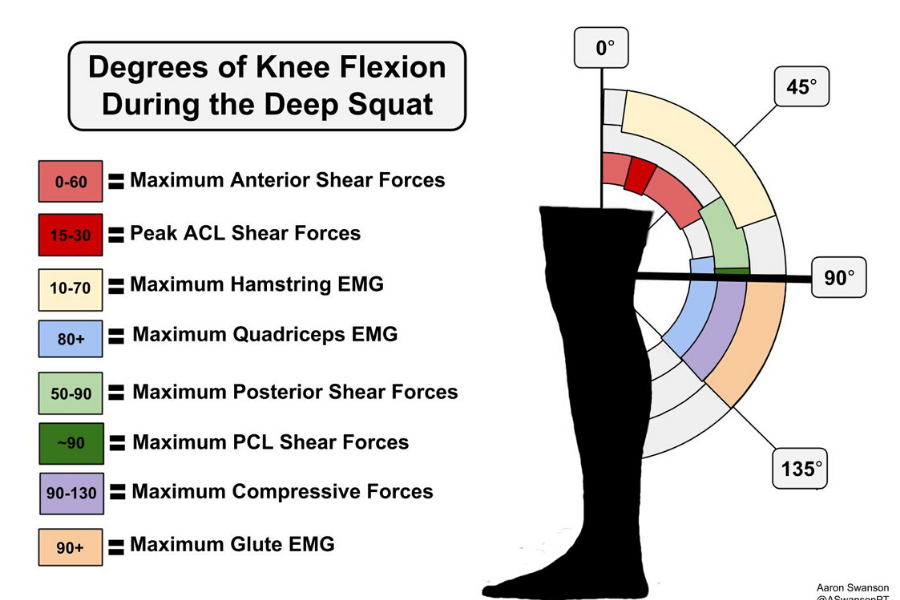Stop With the Heel-Elevated Squats: It’s Not Your Ankles
The squat is the king of all exercises. Some will say it’s the deadlift, but to me, it’s absolutely the squat. Show me someone who can squat more than they can deadlift and I’ll show you a STRONG person. Everyone should do some variation of the squat whether they’re an athlete or just looking to increase their general fitness.
All that being said, not everyone is ready to squat with a barbell on their back. Some lack the hip mobility to achieve depth in a good position, some lack ankle range of motion to get through the movement in a good position, and others lack the core and upper back strength to stay in a good position.
As strength and conditioning coaches and personal trainers, we use different variations of the squat with different people. Some do bodyweight versions, some do box squat variations, some are front squatting, some are doing goblet squat variations, and others use various barbells to perform squats. As I said, everyone should find a way to include the squat in their training.
But there is one variation of the squat that I cannot stand. There’s one variation that makes me rage when I see it. That version is the heel-elevated squat and today we’re going to talk about why this version is best left out of your program and what you can put into your program that will help you get a barbell on your back.
What is a Heel Elevated Squat?
A heel-elevated squat is a version of the squat where you slide something under the heels of the squatter. It could be a 2x4 board, it could be a pair of 2.5 or 5lb plates, and I’ve even seen 25-45lb bumpers used for this. What this does is bring your heels higher off the ground while still being able to maintain some weight on your heels. This variation is used for people who lack the ankle mobility to be able to keep their heels on the ground when squatting.
While this is often seen as a good way to allow yourself to be able to squat when you have this lack of ankle mobility, it changes the entirety of the movement pattern that is the squat. It also puts a lot of shear forces in the knee, and for many people takes much of the the hips out of the movement. We’re going to talk about the detriments of this movement now.
Shear Forces in the Knee
The heel-elevated squat increases what we call shear forces in the knee, anterior tibial shear forces to be exact. Shear force is defined as an internal force in any material that is usually caused by any external force acting perpendicular to the material, or a force that has a component acting tangent to the material. It looks a lot like this photo here. This kind of shear force comes from co-contraction of the hamstrings and quads but is heightened when there’s a greater quad-to-hamstring strength ratio.
Now, the squat involves both shear and compressive forces. The reason a heel-elevated squat increases this anterior tibial shear force is due to the angle you force yourself into when elevating your heels.
It’s hard to see, but hopefully, this graphic below drives home the message of the different angles at the knee when using a heel-elevated squat vs a regular squat. While both women in this graphic are squatting to the same depth, the heel-elevated squat yields a much more severe angle at the knee. This angle increases to amount of shear force that acts at the knee. It’s subtle, however, it changes both the forces that act at the knee and the recruitment pattern of muscles.
This change in muscle recruitment involves utilizing more of the muscles that act at the knee, the quads in particular. Now there’s nothing wrong with a quad/knee-dominant squat. After all, the front squat is an incredibly popular movement and it has a wide range of benefits. There’s also the fact that the hamstrings are a knee extensor in any weight-bearing position. What this means is that the hamstrings actually act to pull the knee back into extension as we go to stand up. This only happens when we have our feet on the ground though.
While there is still hamstring activation in this particular movement, the burden of movement undoubtedly gets shifted the the quads. This increased quad-to-hamstring ratio increases shear at the knee, which over time can lead to knee pain or Patellofemoral pain syndrome, or PFPS.
Now, someone who has a very balanced training program where there’s great attention to detail when it comes to posterior chain strength can benefit from an elevated-heel squat by mitigating the negative effects of this movement. However, most people utilizing this version of the squat are newbies who more than likely don’t have all their ducks in a row when it comes to increasing posterior chain strength.
Hip Extension Movement Pattern Destroyer
There are seven primal movement patterns that we as humans should be able to master. These movements are innate, but as we get older our bodies try to conserve energy and we will move our way right out of these patterns. Everyone should be able to do the following:
Squat
Hinge
Push
Pull
Rotate
Lunge
Walk/Run
These are the seven primal movement patterns that we as humans should be able to perform pain-free. The squat is one of the most important of these movements, and elevating our heels while performing them is like putting a bandaid on a bullet wound. Sure it looks okay, but underneath there’s a lot of damage still occurring.
There is a sequence of events that happen when we squat. Our hips drive backward, our knees track forward, and our torso stays stiff but drops. This pattern is changed when we elevate our heels and we don’t incorporate our hips nearly as much into the movement. If you’re an athlete, this changes the firing sequence of muscles and this can have an effect on your play on the field.
There’s a specific firing pattern that happens any time we go through hip extension. These are known as Janda’s firing patterns for hip extension:
Glute
Hamstring
Contralateral Lumbar Extensors
Ipsilateral Lumbar Extensors
When we elevate our heels in the squat, it drives a lot of our weight onto our toes/balls of our feet as opposed to allowing our heels (whole foot really) to take on the brunt of force transfer. This can, and does, cause our hamstrings to take over a lot of this hip extension if we’re unable to achieve depth (90 degrees or greater) in the squat. Here’s a graphic showing this:
As you can see from the graphic above, in a typical squat you’ve got to achieve roughly 90 degrees to be able to get a maximal glute contraction. Anything above that is very hamstring-heavy, and with the new angle we’ve created by elevating our heels it is actually more quad-heavy than this graphic shows.
Now, you can absolutely make the argument that by elevating the heels you’ve made a 90-degree plus depth more achievable and you wouldn’t be wrong. However, that implies that the squatter is delivering the majority of the forces through their heels (whole foot instead of toes), and that typically doesn’t happen in my experience. If someone can’t achieve depth in a squat for whatever reason, they definitely will struggle to maintain weight on their whole foot.
Elevating your heels may help you achieve more “depth” while keeping your whole foot on the “ground”, but the movement pattern changes pretty drastically when you do this and can lead to improper/poor rate coding through hip extension. This can lead to dysfunctional movement at best, and injury down the road at worst.
Ankle or Hip Mobility Issues?
A lot of what stops people from being able to squat to depth isn’t necessarily ankle mobility. While your toes come off the ground when trying to achieve depth, chances are it isn’t an ankle issue. Your issue is more likely in your hips believe it or not.
While tight ankles can be an issue for some, most people shift up onto their toes when they squat simply because they cannot achieve more depth with their hips. Because you lack strength in your hip abductors, adductors, and glutes (and more than likely your hamstrings), when you descend into the squat your body will make an attempt to change your leverages which means driving your knees forward. When your knees drive forward, you eventually run out of room in your ankles. While increasing your ankle range of motion will help in this, it’s not going to tackle the issue at hand which is lack of strength (and mobility) in the hips. This is a lot like an elbow flare in the bench press. When you lack strength in one area, your body will change your leverages that are better suited to your abilities.
While any good strength and conditioning program will tackle hip and ankle mobility and strength, understanding where your actual limitations are will ensure you’re able to continue moving the needle in a positive direction. If you’re under the impression that your ankles are the main issue, then you’re going to spend more time than you need to on ankle strength and mobility. This time would be better spent working on hip strengthening which will help to increase your mobility.
How Do I Fix This?
For starters, don’t elevate your heels when you’re squatting. Again, this is likely to make the issue worse, and a lot like putting a bandaid on your finger after getting shot in the leg. You need to increase your end-range strength at the hip, spend time on one foot training, and keep the squat pattern in your movement prep.
Squat Patterns You Can Perform
Infant Squats
Bodyweight Squats
Light Goblet Squats
Goblet Box Squats
Bodyweight Box Squats
Sumo Squats (bodyweight and loaded)
Hip Strengthening
End-range abduction/adduction isometric holds
IROT/EROT isometric holds
Hurdle Mobility Work
Hip Mobility
Band-distracted anterior and posterior hip capsule stretches
Groin stretches
Hamstring stretches
Hip flexor stretches
Single Leg Work
Walking Lunges
Reverse Lunges
Lateral Lunges
Rear Foot Elevated Bulgarian Split Squats
Step Ups
Including these exercises in your training will have a drastic impact on your ability to achieve depth in the squat, and you won’t have to destroy your squat movement pattern while doing so. You’ll be able to get stronger and more mobile before you introduce the barbell squat into your routine.
Try incorporating these for a month into your routine, then get back under the bar to squat and I’ll guarantee you that your heels stay on the ground.
Let’s Wrap This Up
While the squat is the king of all exercises in my humble opinion, not everybody is ready to get under a barbell when it comes to squatting. You need to have the prerequisite hip mobility to do so.
While it may appear that your ankle is the issue because you are getting on your toes, check your hips before sliding those weights under your heels in the squat. You’ll thank yourself down the road.




